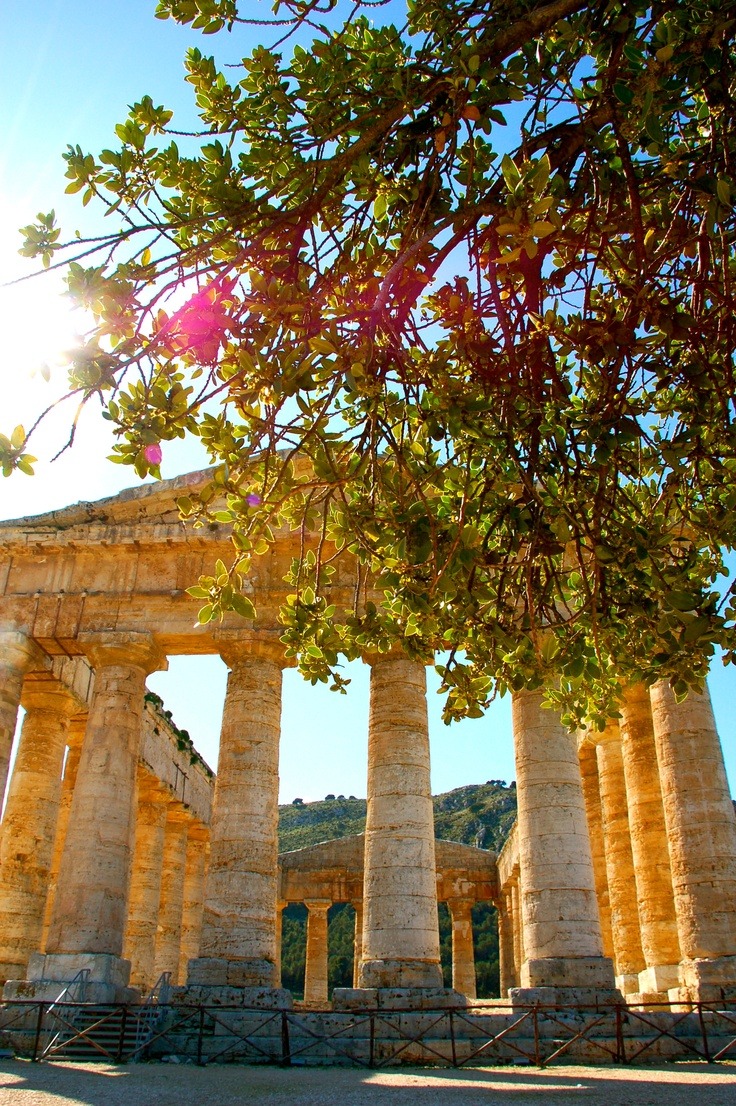The temple of Segesta is a greek temple in the ancient city of Segesta in the archaeological site of Segesta Calatafimi , Italian commune in the province of Trapani in Sicily .
The temple, sometimes called the "Great Temple", was built during the last thirty years of the fifth century BC, on top of a hill west of the city outside its walls. It is a great temple periptero hexastyle (ie with six columns on the shorter side, not grooved). On the other hand, has fourteen long columns (36 in total then). The current conservation status presents the entire colonnade of the peristyle full of all the entablature . Despite the constructive elements and proportions of the building relate clearly to the classical period of the ' Greek architecture , the temple has unique aspects on which the historiography does not express opinions unanimous.
The first element of the debate is constituted precisely by its very nature of artistic expression Hellenic fully updated to the greatest expressions of the motherland and in particular of Attica, but made a city in the Elymians , a population of uncertain origin, but settled in Sicily long before the arrival of the Greek colonists in the nearby Selinunte , Segesta with which he was constantly in conflict. Historians speculate that, thanks to trade, the city elima reached during the fifth century BC, a high degree of Hellenization, such as to knowingly import a sophisticated artistic model as the Doric temple periptero that thanks to the canonization of dimensions and proportions lent itself to a wide circulation. It is also likely that the designer and the workers employed were Greek, coming from one of the nearby cities.
The second aspect that has always impressed historians is the absence of traces of the cell inside the colonnade , but that is one of the best preserved in the greek world. This has made me think a temple ipetro or better to a sacred place without cover and cell and tied to indigenous rituals. Alternatively you thought of a cell entirely wooden structure, like all the coverage, and then lost.
In the 80s are the remains of the foundation of the cell, buried inside the temple, along with traces of earlier buildings (which suggests that the temple was built on a sacred place even earlier). Therefore, the prevailing hypothesis is that the temple was never finished, probably due to war events which involved long the city and that the cell coverage and have never been realized.
This hypothesis is also corroborated by the absence of the grooves of the columns and by the presence, especially on the blocks of crepidoma , of "clues" that is of protuberances intended and protect the block during commissioning work that would have been chipped off in finishing stage.
The temple then would have to have a large cell preceded by a pronaos distylous in antis and a symmetrical opisthodomos on the back. The colonnade, with equal spacing on all sides, presents the canonical double contraction of the spaces between the terminals to solve the conflict angular as well as other typical optical devices such as the curvature of the horizontal lines and the design of the decorative frieze that loses, at least in part its dependence on the colonnade. These characteristics show a derivation from evolutionary models penthouses at the end of the fifth century BC and in particular the Temple of the Athenians to Delos , to whom also refer decorative elements.
The only aspects related to the severe style are still the elongated proportions with 6x14 6x13 columns in place of the canonical (double square), and the large size at a time when the temples became smaller.
In the eighteenth century the temple was first the subject of a restoration by architect Chenchi. It was visited by Goethe and became one of the goals of the Grand Tour and one of the causes of the rediscovery of Greek and Doric, which was at the root of neoclassicism.
Source:
Picture:Link:
Wikipedia:Link:

0 comments:
Post a Comment